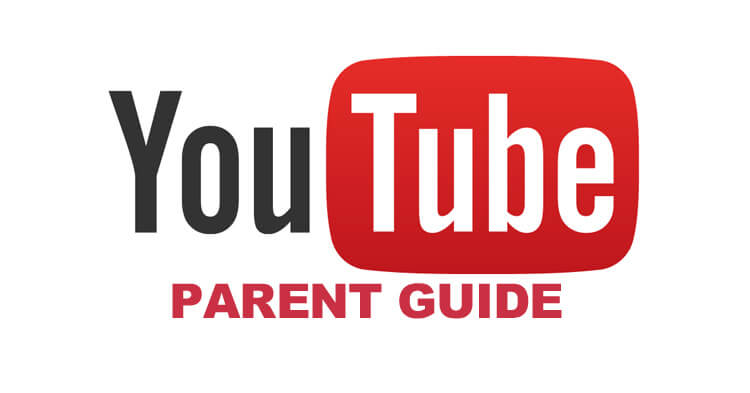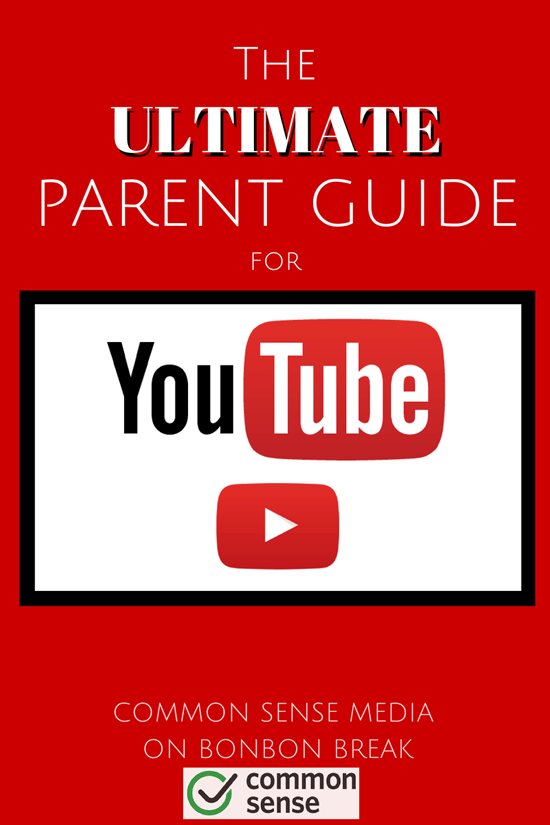The Ultimate Parent Guide to YouTube

By Caroline Knorr, Common Sense Media Parenting Editor
Smosh, Good Mythical Morning, PewDiePie — the names may not mean much to you, but chances are your kids are on a first-name basis. Their funny hosts, off-the-cuff commentary, silly antics, and bewildering (to adults) subject matter put them among the most popular YouTube channels for young teens, garnering millions (and, in the case ofgame commentary PewDiePie, billions) of views. In fact, according to a recent survey of U.S. teens by Variety, the top five most influential celebrities are YouTube stars. But information about these personalities’ shows — the content, quality, and age-appropriateness, for example — isn’t easy for parents to find.
Unlike video games, movies, TV shows, and other media, YouTube channels pose a challenge for parents because anyone can create them, they crop up seemingly out of nowhere, they don’t follow program schedules, and they’re cast out among thousands of other videos. Still, there are clues to figuring out which channels and creators are OK for your kids. YouTube clearly has a huge impact, and you’ll learn a lot about your kids when you really dig into what they’re tuning into. (Here’s a rundown of some of the most popular YouTube stars.)
And it’s worth doing. Kids love discovering new videos on YouTube, and that often means exposure to iffy stuff — even when they’re not seeking it out. With some simple tools, you can help your kids regulate their habits and increase the chances that their experience will be positive. Also, read our detailed review of YouTube.
The Basics
Watch with your kid. Simply ask your kids what they’re watching and join them. In general, kids are tuning into certain channels or following specific YouTube personalities because they’re entertained by them. Many kids naturally want to share the videos they like.
Watch by yourself. If kids don’t want to share, get the name of the channel they’re watching and watch it later. Watch a few videos by the same creator to get a feel for the content.
Be sleuthy. If you’re concerned about the content your kid is watching on YouTube — and you’ve tried talking to her — there are ways of tracking her viewing habits. If she has a YouTube account (which only requires a Gmail address), her YouTube page will display her recently watched videos, recommended videos based on her watch history, and suggestions for channels similar to the ones she’s watched. Even if your kid deletes her “watch history,” the recommendations all will be related to stuff she’s watched.
Subscribe. Encourage your kids to subscribe to their favorite channels rather than hunting around on YouTube for the latest ones from a specific creator. Subscribers are notified when a new video is uploaded, plus all their channels are displayed in My Subscriptions, making it easier, and faster, to go directly to the stuff they like. Consider choosing subscriptions together, and make an event out of watching the newest uploads with your kids.
The Nitty-Gritty
Investigate the creator. The name of each video’s creator appears beneath the video window and usually has a bit of information about the person behind the video and/or the channel itself. Google the creator’s name to find out whether he or she has a Wikipedia page or another Web presence. You might find out that your kid’s favorite YouTube personality has an impressive reach. LGBT advocate Tyler Oakley, for example, has a huge fan base that crosses demographics, making him a positive role model for all kinds of kids.
Look at the suggestions. The suggested videos listed on the right-hand side of the page are related in some way to the main video. Evaluate them to see if they seem age-appropriate, and that will provide an indication of the appropriateness of the main video.
Consider the ads. If an ad plays before the video, that’s actually a good sign. To qualify for advertising and earn money (the goal of most YouTube channels), a creator must apply to be a YouTube partner by sending in some sample videos. YouTube rejects videos that don’t meet their terms of service and community guidelines — vulgar or stolen content, in other words. Yes, that means your kid sees more ads, but the trade-off seems worth it (and you can always mute the commercials).
Read the comments. YouTube comments are notorious for being negative, but it’s worth reading them to get a sense of the channels’ demographic and the tone of the discussion. Channel creators can moderate their comments to reduce the amount of negativity. Well-groomed comments are a good sign.
Watch the trailer. Many creators make highlight reels and trailers — basically video ads for the channels themselves (which usually appear first on the channel page). Definitely watch them if they’re available to get an overview of the host and the content.
Finding Good Stuff
Turn on safety mode. Be aware that YouTube is technically only for teens 13 and up, and what the site considers age-appropriate may not match your values. But YouTube offers a filter called Safety Mode that limits the iffy stuff. Simply scroll down to the bottom of any YouTube page. See where it says “Safety”? Click it on. (It will remain on for logged-in users on the same browser.)
Take YouTube’s advice. Most kids find out about new videos either from their friends or by clicking on the related videos (which may or may not be appropriate). But YouTube itself offers several ways to home in on quality content. Visit YouTube Nation for curated content in a variety of categories. Read about YouTube news on the company blog, and find out what’s trending all over the country on the Map and the Dashboard.
Watch later. YouTube gives you the ability to save videos to watch at a later time, which improves the odds that your kids will be exposed to stuff you’ve pre-approved. You can create playlists, too, virtually designing a customized programming schedule of content for each of your kids or for different subjects they’re interested in.
Pin it for later
 ABOUT COMMON SENSE MEDIA: Common Sense Media is dedicated to improving the lives of kids and families by providing the trustworthy information, education, and independent voice they need to thrive in a world of media and technology. We exist because our kids are growing up in a culture that profoundly impacts their physical, social, and emotional well-being. We provide families with the advice and media reviews they need in order to make the best choices for their children. Through our education programs and policy efforts, Common Sense Media empowers parents, educators, and young people to become knowledgeable and responsible digital citizens. For more information, go to:www.commonsense.org.
ABOUT COMMON SENSE MEDIA: Common Sense Media is dedicated to improving the lives of kids and families by providing the trustworthy information, education, and independent voice they need to thrive in a world of media and technology. We exist because our kids are growing up in a culture that profoundly impacts their physical, social, and emotional well-being. We provide families with the advice and media reviews they need in order to make the best choices for their children. Through our education programs and policy efforts, Common Sense Media empowers parents, educators, and young people to become knowledgeable and responsible digital citizens. For more information, go to:www.commonsense.org.




